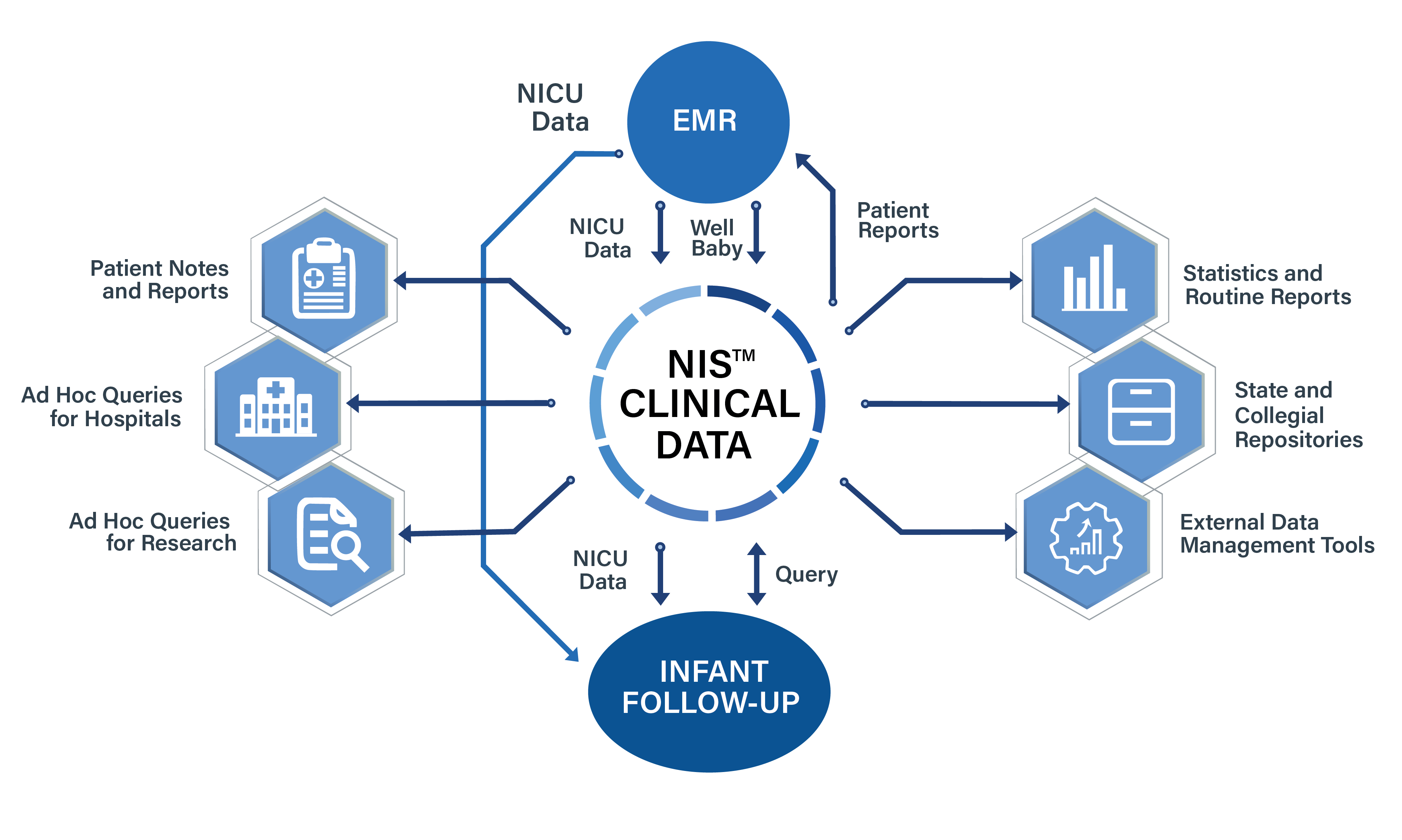
You have complete control and flexibility as to the type, amount, frequency, and method of data capture - and how it appears onscreen!
NIS™ offers unlimited reporting options, in real-time! Patient reports, sign-off notes, clinical statistics...the possibilities are truly endless!
NIS™ has a robust data analysis capability that is user-defined and operated in real-time for clinical decision & quality of care support.
The NIS™ provides a rich set of neonatal codes built within the database and allows for ICD9, ICD10, CPT codes, and other coding systems.

Accurate, efficient, secure, and affordable solutions for accessing your patient’s information in real-time.
The NIS™ provides a sophisticated and robust system for analytical functions at little lead time to support:
Contain costs by interfacing the Neonatal Information System™ with your hospital’s EMR. Produce any kind of report that you need now without incurring additional IT costs.
Epic is a registered trademark of Epic Systems Corporation


Complex Situations. Powerful Solutions.
Clinical Information Solutions for Neonatology from Medical Data Systems
Since 1985, MEDICAL DATA SYSTEMS has worked closely with neonatologists, nurses, hospital administrators, IT, and EMR personnel in hundreds of newborn intensive care units to develop innovative solutions for the management of complex clinical data for well and critically ill newborns and infant follow-up.
Neonatal Information System™ – from Perinatology, the NICU and well-baby experience through Infant Follow-up – the NIS™ will meets all of your on-going and ad hoc reporting requirements.
Our Commitment
MEDICAL DATA SYSTEMS is committed to using emerging technologies to our client’s advantage. We offer total access to critical information to provide you with faster, more accurate, and cost containing information for the complete spectrum of your reporting requirements.






Simply put - the Neonatal Information System™ is the most comprehensive clinical information management system available today; incorporating information from all aspects of clinical care for critically ill newborns in the NICU.
Notifications